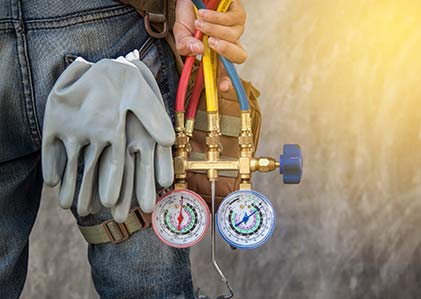Refrigerants were first used in the United States in the early 1800s when natural substances, such as ammonia, carbon dioxide, and sulfur dioxide, were initially used in cooling systems.
However, these substances had safety concerns, prompting the development of synthetic refrigerants such as chlorofluorocarbons (CFCs) and hydrochlorofluorocarbons (HCFCs) in the early 20th century. These new refrigerants significantly improved safety but were later discovered to contribute to ozone depletion. In 1987 the US joined the international Montreal Protocol, which led to a phase-out of CFCs and HCFCs in favor of hydrofluorocarbons (HFCs). While HFCs have no ozone depletion potential, they have a high global warming potential. As a result, recent efforts have been implemented to phase down HFCs and promote environmentally friendly alternatives.
Keeping refrigerants contained and out of the atmosphere is critical. Manufacturers must put refrigerants in metal cylinders to store, transport, and utilize these materials. There are two forms of cylinders: disposable and refillable. Currently, it is estimated that there are four to five million 30-pound refrigerant cylinders in the US, and only between one to 10 percent of those are refillable.
Disposable cylinders have several downsides, which is why, starting on January 1st, 2025, the EPA is banning the sale of new disposable cylinders and their use beginning January 1st, 2027: “Disposable cylinders have been banned in a number of countries, including the European Union, Canada, and Australia. So the reason why they’ve been banned in all those places, and why the EPA is following their example, is when you are done using them, there are remnants of the refrigerant, called the heel, and that’s an environmental risk,” shares Irina Tsukerman, a New York-based human rights, and national security lawyer.
Overall, this ban aims to reduce emissions of hydrofluorocarbons and help promote the use of more sustainable alternatives, such as natural refrigerants, which have lower environmental impacts. The EPA Cylinder Ban has been met with some opposition from industry groups such as Worthington Industries and several HVAC/R associations, that argue it will raise costs for businesses and consumers while empowering Chinese manufacturers. Additionally, some technicians have expressed concern over safety issues related to using alternative refrigerants.
Keep reading to learn more about the EPA Cylinder Ban, why it is important, and who is opposed to it and why.




